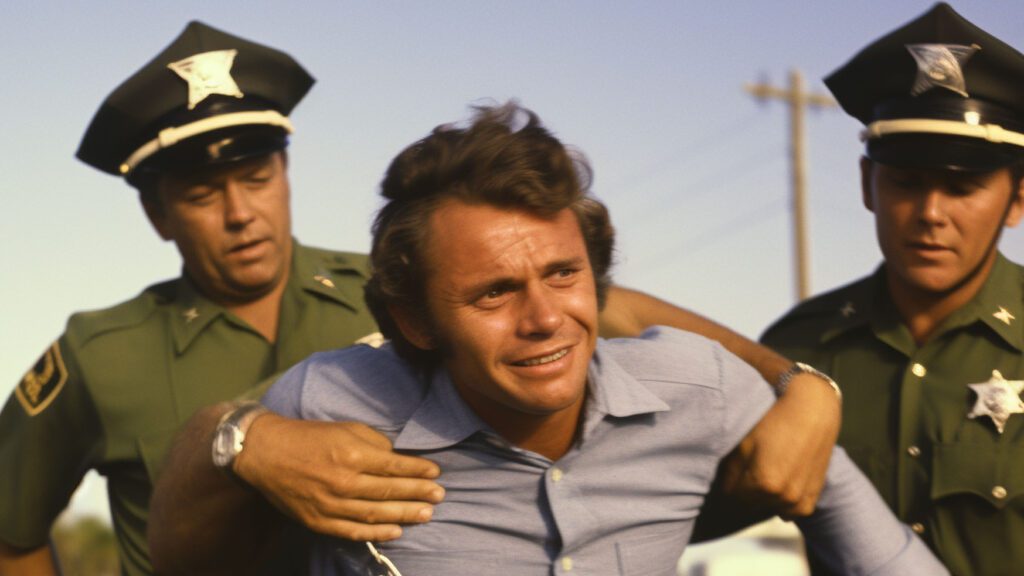Ted Bundy, the notorious American serial killer, caused a reign of terror throughout the 1970s. His charm and intelligence masked a devious predator who took the lives of numerous young women across multiple states. This blog post will take you through the pivotal moments leading to Bundy’s arrest, the capture itself, and the immediate aftermath.
Before Bundy’s arrest, his chilling murder spree spanned several states, including Washington, Oregon, Utah, Colorado, and Florida. The gravity and scope of his crimes prompted an extensive manhunt, complicated by the geographic spread and, initially, a lack of connected evidence. Bundy managed to evade capture mainly due to his ability to blend in, his charm, and his calculated brutality.
Bundy’s luck finally ran out on February 15, 1978, in the early hours. He was driving a stolen Volkswagen Beetle in Pensacola, Florida when Officer David Lee pulled him over due to the vehicle’s suspicious nature. Aware that his freedom hung in the balance, Bundy attempted to flee but was swiftly apprehended by Officer Lee. What followed would reveal the horrific extent of his crimes.

In the car, police found a collection of suspicious items, including a ski mask, a second set of license plates, and a crowbar. These items, while alarming, were not the undeniable evidence needed to tie Bundy to the brutal murders. However, Bundy was driving a stolen vehicle and was arrested and brought into custody.
In the days following Bundy’s arrest, he initially refused to reveal his identity. He was booked as ‘John Doe,’ but the police were certain they had a significant suspect on their hands. They began the painstaking process of gathering evidence and building their case.
Meanwhile, in Colorado, investigators had been building a case against Bundy for the murder of Caryn Campbell. Once Florida authorities were able to identify Bundy, the pieces began to fall into place across multiple states, revealing the horrific tapestry of his cross-country killing spree. Bundy’s prior escapes from custody in Colorado made authorities in Florida tighten their security, determined not to allow him another escape.
Bundy’s arrest marked a significant turning point in one of American history’s most notorious criminal cases. The ensuing trials would captivate the nation and go on to highlight the critical importance of interstate information sharing in capturing transient criminals.
In retrospect, the arrest of Ted Bundy serves as a chilling reminder of the persistence and determination needed to capture such a devious and dangerous criminal. It was a combination of routine police work, sharp intuition, and growing forensic evidence that finally put an end to Bundy’s reign of terror.